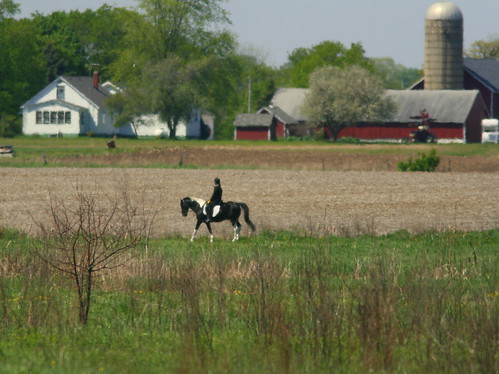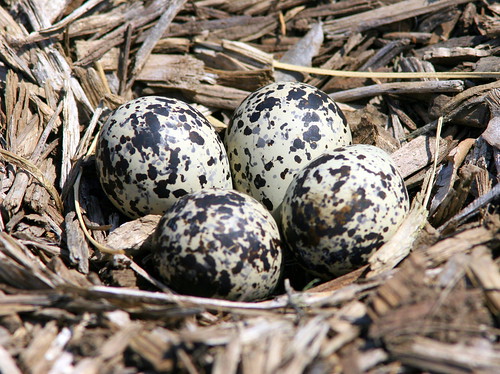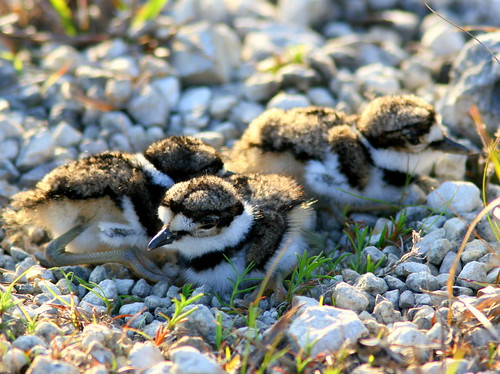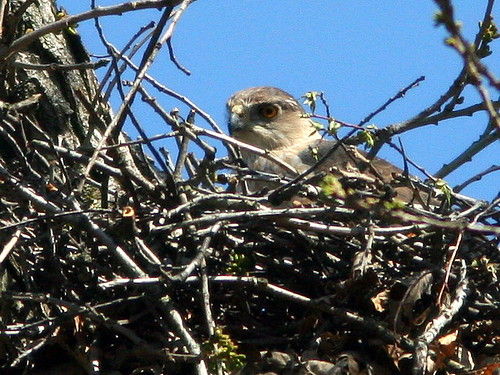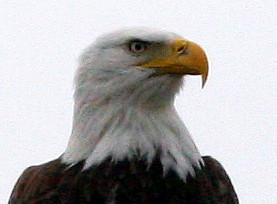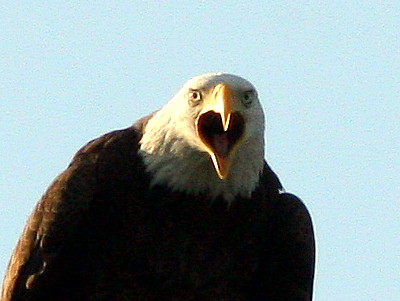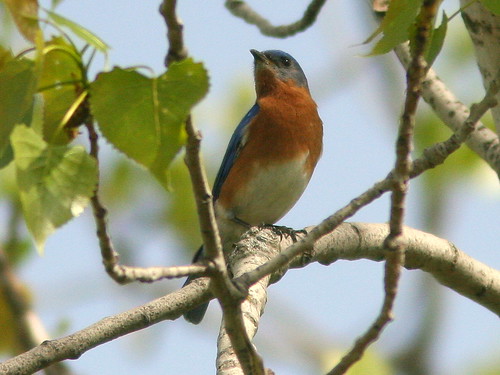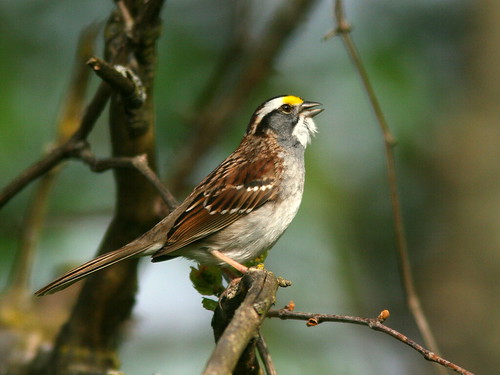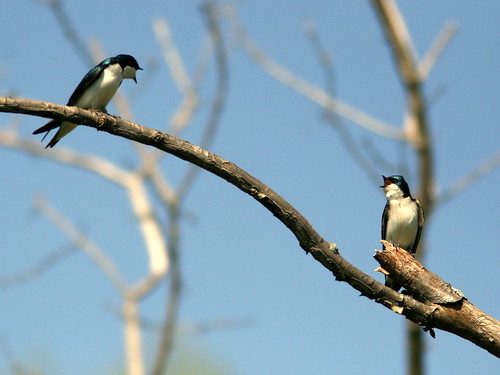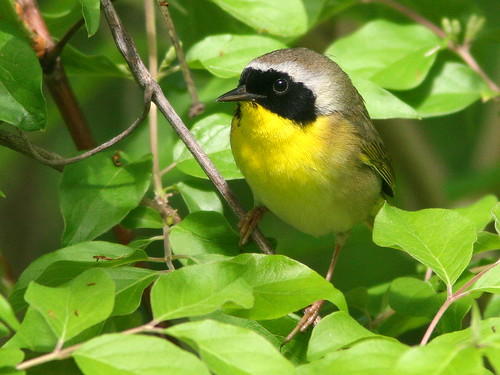Posted by: Ken @ 1:51 pm
The recently burnt field in the foreground, at Nelson Lake/Dick Young Forest Preserve in Kane County, Illinois, will soon harbor the nests of Savannah Sparrows and Sedge Wrens:
As a child of about 10, I often tried to locate active birds’ nests. This could be difficult, and it took patience and some careful behavioral observation. If I saw a bird gathering nesting materials or food, I would try to follow it to the nest site. Another clue was that birds with nestlings often carried white fecal sacs away from the nest after feeding the young, discarding them some distance away to keep the nest clean and also deter predators. I took photos of many nests with a liitle Kodak Brownie box camera, and hurried to get the film developed. I was almost always too close and they were out of focus:
Some nests were relatively easy to find. If I came across a Killdeer that tried to distract me and lead me away by calling and feigning injury, I knew its nest was nearby. I would simply walk directly opposite from the way that the Killdeer wanted me to go. The bird would become more frantic the nearer I approached the nest or its chicks. Since both eggs and young are so well camouflaged, I stepped very carefully so as not to crush them underfoot. Now I know that it is generally not a good idea to approach the nest of any bird, as this causes them great anxiety. You also may attract predators to the site.
Recently, this Killdeer ran across the path when I was walking the dog in nearby Hawk’s Bluff Park, in Batavia, IL:
It then showed me its bright orange rump and tail feathers as it fluttered on the ground, all the time calling “dee-dee-dee…” to attract my attention: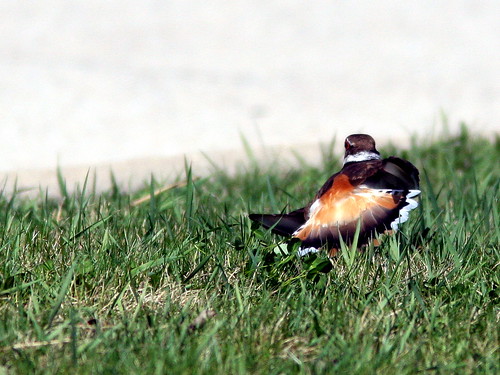
I did not try to pinpoint this nest, but I assume it was very close to where it was last year:
In Florida, using the same technique of “reverse logic,” I found these Killdeer chicks on the shoulder of a gravel road:
In contrast to the distraction display of the Killdeer, some birds defend their nest aggressively. In an earlier blog (The Goshawk and the Bear), I recalled the angry response of a Northern Goshawk when I innocently stood under its nest tree.
Cooper’s Hawks are known for sometimes attacking humans who simply walk under their nests. This one, incubating eggs at Hawk’s Bluff Park (so named for the persistence of nesting hawks in its oak trees) tends to ignore hikers on the trail beneath its nest:
Not far away, a Red-tailed Hawk keeps watch over its young:
Birds are unable to change their facial expressions to show emotion. Some birds of prey, notably eagles, have fierce-looking faces because of the bony ridge that shades their eyes produces a permanent frown. This Bald Eagle is nesting near our Florida home:
While his expression appears to be angry and fierce, this eagle is merely calling to his mate:
The plain face of the Eastern Bluebird conveys a sort of innocence…
...contrasting with the extravagant painted face of the White-throated Sparrow:
The body language of these two Tree Swallows leaves little doubt that they are engaged in a territorial dispute:
The eyes are often the most interesting feature of a photograph, and they must reflect some light in order to stand out. Black faces give me the most trouble, as dark eyes will blend into the plumage if they do not catch the light. Usually, yellowthroats skulk in the darkness of thickets, and their eyes melt into their black masks.
Luckily, this Common Yellowthroat briefly hops into the sunlight, and his eyes sparkle.
I will never forget the angry response of one Brown Thrasher that flew
right in my face. That was the last time I ever ventured near one of
their nests. Even today, the fire in the stare of a thrasher brings back
that childhood memory.
This Brown Thrasher was actually just
foraging when I photographed it, but oh those scary eyes!:













